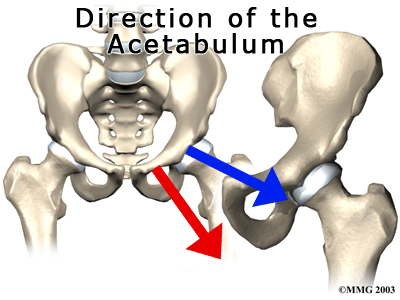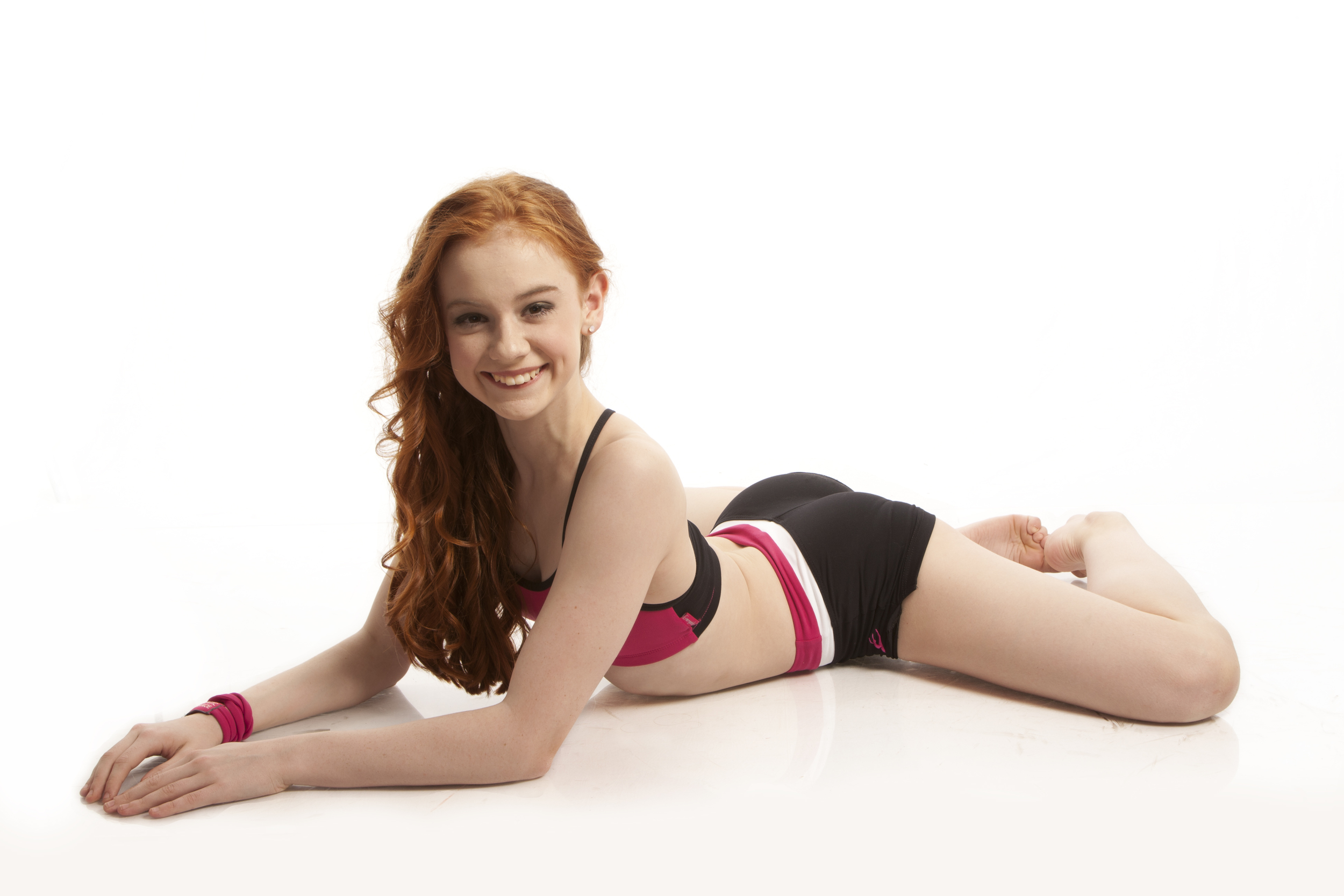Turning out better
Everything you need to know about turnout and how to improve it.
It's no wonder Einstein said, "Dancers are the athletes of God" when professional dancers are expected to fulfill physical demands that, in the eyes of the non-athlete, seem virtually inhuman.
The ballet world promotes standards that demand nothing less than perfection, with many positive - and many negative - results.
Perhaps one of the most taxing, difficult and (if not performed properly) damaging requirements of ballet is the expectations of turnout. In today's highly competitive and ever-growing industry 'flat' turnout (the rotation of the hips to a 180 degree alignment) has become not just an advantage, but a requirement.
Whilst many teachers do counsel students not to 'force turnout' beyond their natural capabilities, and to 'work with what you've got' the realities of most real-world ballet companies demanding flat turnout as a prerequisite for consideration leads many young dancers to force turnout, putting excessive strain on hip, knee and ankle joints, and leading to rolling, instability, and often serious, long-term injuries that can plague them long after their dancing years are over. Not only does this kind of practice lead to problems later down the track, it also compromises the quality of the dancer's technique and creates weaker joints, particularly in the ankles, where extra strain leads to continued rolling and stretching of the supporting tendons and ligaments.
Assessing your 'natural' turnout
To avoid such injuries, each dancer must first develop an awareness of their own natural turnout capabilities, as this will allow you to work intelligently to consciously improve your turnout, without forcing anything beyond the natural limits of the body. Firstly, recognising the factors that are limiting your turnout will help you to understand the boundaries of your own body, and focus on improving those areas that will most benefit rotation.
These factors are:
Blue: A more lateral facing socket makes turnout easier in contrast to a more forward facing socket (in Red).
Direction of the Acetabulum - just like everything else in the body, the shape, size and direction of the acetabulum (hip socket) is different for each individual, and those born with more forward-facing sockets will have greater difficulty turning out than those born with quite lateral facing ones. Whilst the range of motion allowed in the acetabulum will vary from person to person (and is unfortunately a fixed amount so no amount of stretching will give you a greater rotation in the hip socket than your natural bone structure allows), steps can be taken to loosen and improve the range of flexibility in the muscles, tendons and ligaments that surround the hip and upper femur.
The hip's stabiliser. Image source: https://www.kenhub.com/en/library/anatomy/femur © Kenhub. Illustrator: Liene Znotina
Ligament Elasticity and Laxity - the iliofemoral ligament, which resides on the front surface of the joint and connects the ilium to the femur, is the ligament responsible for supporting and preventing over-extension in the hip by limiting the range of movement. As you extend or laterally rotate the hip, the ligament is elongated and pulled tight, however rigorous stretching can lead to a gradual increase in the ligament's laxity (though this should be done with the utmost caution as a firm iliofemoral ligament is key to ensuring joint stability). Ligaments that are stretched too far and have lost their laxity will never fully regain their same level of elasticity or stability. As dancers, we often experience tight hip flexors, so gentle stretching is usually beneficial, just don't over-do it!
Size and Shape of the Femur - the femoral neck, which is the area of the femur (the bone in your upper leg) that connects the leg to the hip via the acetabulum, may also have a significant impact on the amount of external rotation that is possible. Someone with a slender, relatively narrow femoral neck will have greater mobility than another with a broader or less concave femoral neck.
Muscle Strength and Flexibility - now for the good news! While you can't really do anything about your femoral neck, the orientation of your hip sockets, or the natural laxity of your ligaments, you can improve your muscle strength and flexibility! Just like everything else in the body, there's only so much that can be done to alter your physical faculty from the predetermined limits dictated by your genetics, but regardless of whether you are 'naturally' flexible or not, with consistent conditioning you can loosen and lengthen your adductors and internal rotators whilst strengthening your external rotators and improving your overall turnout.
And finally, the last major factor that will determine your turnout abilities is The Brain! Without the mental focus and desire to improve, altering your turnout is a lost cause. Not only is the brain the control centre for all the motor skills and muscle movement required in the process of turning out (so without focus and attention the muscles cannot be expected to turn out correctly), but it is also here that the passionate student will find the willpower to persevere when others falter. Turnout, like everything else in ballet, requires precision and hard work but as long as you have the knowledge and passion the 'impossible' can be acheived.
Natural turnout gauge
Lay flat on the ground, stomach to the floor and draw the legs up in a turned out position with the soles of the feet touching. Keep bending the knees until you're in the 'frog position' (like Ashi below). Keep the pelvis firmly connected to the floor, allowing the ankles to rest as close to the ground as possible. The distance of the toes to the floor is not of any significance (as this only represents ankle joint flexibility and we are focusing on hip rotation), instead note the distance of the legs from just above the ankle to the ground. If your feet are stuck up in the air then you have quite limited range of rotation in the hip sockets and need to focus on gently loosening up the ligaments and muscles that might be limiting your hip's range of motion. If your ankles easily reach the ground, or close to, then your main challenge will be being able to engage and maintain your natural turnout (ie. making your natural turnout your working turnout).
Ashi Ross demonstrates this exercise for assessing your natural turnout capacity. It's also a great stretch to improve turnout when practiced regularly. Please note: a complete indication of your natural turnout capabilities can't be gauged with any one exercise, this method will give you a rough idea of what you've got to work with.
Improving your level of turnout
Now know what limits turnout and which muscles are involved, so how do you go about improving your turnout?
Firstly, your goal should not be to stretch your turnout directly, but rather to stretch out the muscles that are limiting your range of movement (not necessarily stretching them outwards as sometimes the solution can be counter-intuitive!) but rather turned in stretches can be the most beneficial. Many dancers have an imbalance between their quads and hamstrings, their hip-flexors and their glutes, abductors and adductors, and external and internal hip rotators, with the former being over-worked and the latter often under-worked and/or weakened.
To improve your turnout while maintaining good technique you should focus on strengthening the right muscles and releasing the over-active ones in order to give you proper alignment. This in turn opens up and strengthens the external rotators, allowing you to access a whole new range of external rotation.
Exercise 1: Prone Internal Rotation Stretch
Lie on your stomach on the floor. Place your forehead on your stacked palms. Bend both knees so that the soles of your feet are facing the ceiling. Keep your hip bones in contact with the floor throughout this exercise. Lower your right foot outward and toward the floor. You may not be able to go far and still keep the hip bones down; just go as far as you can with good form. Hold your foot out for a slow, 30-second count. Keep your right knee in contact with the floor and do not twist your knee. Bring your right foot back up and repeat with your left foot. Go back and forth slowly eight to 12 times. Take slow, deep breaths and with each repetition try to bring your foot a little closer to the floor.
Exercise 2: Supine Internal Rotation Stretch
Lie flat on your back, arms perpendicular to the body, with the right leg bent up in a tabletop position (the thigh at a 90° angle to the body and the lower leg parallel to the ground) and the left leg bent in towards the body, with the foot resting flat on the ground, in line with the left hip. Take the right leg and cross it over the left, so that the ankle is resting on the outer side of the left knee. Slowly allow the right leg to externally rotate (towards the floor) whilst letting the weight of the right leg gradually pull the left leg down towards the ground. Once you have gone as far as you can go, relax into the stretch for a count of 20 before swapping and repeating with the other leg.
On a side note, if you happen to have a willing partner around who can help you, this is a great extension to this stretch that will activate and release the gluteal muscles as well as the ligaments and muscles of the hip.
Exercise 3: Flexed Turnout
Lie on your back, and bring both legs up to a 90-degree L-shape angle. Keeping the legs turned in, flex your feet and engage your core muscles through your pelvic floor and lower back. Using your hip abductor and gluteal muscles, turn your legs out with heels together. Repeat 16 times.
Exercise 4: Clams
Lay on your right side, with your head supported by your right hand and the right elbow on the floor. Place your left hand on the ground in front of you. Bend your knees out in front, so that your feet are in line with your hips. Turn your left leg out from your hip, so that it opens like a clam. Lift your leg and turn it out as far as you can, using your turnout muscles in your hips, and hold this turned out position. Close your leg and repeat the exercise. Repeat this exercise twice on the other side.
Advanced (with a Thera-Band): Lay on your side with your knees bent, one on top of the other and your elbow resting on the ground to allow you to sit up a little (make sure you are over your hip and not sinking back). Wrap the Thera-Band around your legs, mid thigh. Rotate the top leg out and in, about 10-15 times. Make sure you don't over-work the muscles, a little at a time is much more beneficial than a lot in one go!
On a side note, if you've got a buddy, sibling, partner or parent ready to help, then these stretches are a great addition to your stretching routine!
1. Releases the inner hips and stretches the piriformis and gluteal muscles. Allowing the legs to turnout, bring your ankles up and rest them on the upper legs of your partner, with your feet crossed at the ankles. Holding on to your partner's arms, gradually get them to pull so that your upper body (keeping your back as straight as possible) becomes parallel with the angle of the legs so you are 'folded in half'. Hold and allow for a gentle stretch and for the hip flexors to release before relaxing out of the position.
Image: pennylomas.com.au
2. This stretch is great for releasing the anterior hip muscles (hip flexors/iliopsoas, adductor longus and rectus femoris). Be careful not to 'crunch' the spine by sinking back, but rather keep lifted and think of pulling up and out of the hips as your partner gently pulls your upper body off the floor and back towards your feet.
Image: pennylomas.com.au
3. Particularly good for stretching the adductor muscles and the pectineus, this advanced frog stretch is great for people who no longer feel a stretch with the standard unassisted frog stretch. The added weight of your partner allows you to relax the muscles instead of keeping them tensed, and access a deeper range of rotation. Do NOT force the knees flat if this stretch doesn't come easily.
Avoiding injury
Maintaining correct postural alignment and not forcing the joints beyond their natural limitations is essential for preventing injuries where turnout is concerned. Often students believe that the harder they push the more results they will see, however, excess pressure on the joints, muscles, ligaments and tendons can cause permanent damage and even decrease turnout ability. This is because in order for the body to maintain the rotation in the hips, the muscles and ligaments must be flexible but not stretched, as a lack of tension creates weakness and instability. Also, over turning out causes excess pressure on the knee and ankle joints, which are not capable of outward rotation like the hips are, and therefore leads to loosened, unstable ligaments and tendons.
One such injury young dancers must be careful of is Tibial Torsion. The added pressure that is applied to the knee and ankle joints when turnout is forced beyond natural limits can cause permanent, harmful rotation of the tibial bone. In such cases the tibia grows so that the bone has rotated out of alignment with the femur causing permanent deformity and inhibiting physical performance (see below). If you're rolling, tensing the arches or gripping the floor with your toes whilst turning out then you are rotating beyond your natural turnout.
It is also of great importance that dancers are aware of maintaining a 'neutral pelvis' (where the bony bumps - the anterior superior iliac spines - on the front sides of your hips are at an equal level to the pubic bone so the hips are not tilting forwards or backwards. Either of these extremes performed whilst dancing places the whole body into an unhealthy alignment that can increase rolling and joint injury.
So, why turn out, exactly..?
It's a relevant question. We're constantly being told to turn out more in ballet, always being reminded to fix our feet, make our 'fifths' tighter and keep our heels down in arabesque, but why? Is it purely an aesthetic choice, and what makes turnout 'pretty' anyway?
Well, turnout does in fact go beyond the purely aesthetic. The main practical application of turnout is that it allows us to facilitate sideways movement with more ease, and external rotation of the hips allows for greater abduction, ie. we can lift the leg higher and much more easily in seconde. When a devéloppé is performed in a turned out position (as opposed to parallel) the leg can lift far higher before the bones of the hip interrupt.
That being said, turnout has gone much beyond a practical bearing as far as ballet is concerned. As ballet progressed through the ages and continued to refine and perfect itself with each new generation of teachers and students, turnout became more and more an aesthetic preference and a requirement, with 'ideal' turnout becoming extreme until today's standards were reached. Unfortunately many companies accept nothing less than the 'perfect' flat one hundred and eighty degree turnout. If only we could all have a seconde like Svetlana Zhakarova below!
However, whilst 'perfect' flat turnout isn't achievable for most of us mere mortals, everyone can improve the way they utilise the turn out they do have and become a better dancer for it.
So know that you know absolutely everything about turnout, all that remains is for you to intelligently apply this information in order to help you improve with your own dancing. And (if you'll excuse my getting a bit corny for a minute here...) remember, whilst turnout is obviously important to the art of ballet, it isn't technique that makes a great dancer, it's passion, so don't get caught up in the technical 'stuff' and lose your passion - enjoy yourself!
Happy dancing. :)
Article by Elly Ford.
Suggested Reading:
Turnout for Dancers: Supplemental Training
Tips for Turnout - Isolating your True Turnout
References:
http://balletuni.com, http://www.theballetblog.com, http://danceproject.ca
http://danceproject.ca/your-hips-dont-lie/#.UxAkL79U3lI
http://www.theballetblog.com/article/training-turnout-part-1-achieving-your-ultimate-range/
http://www.livestrong.com



















